
The 16 most beautiful and inviting public gardens in Southern California
Southern California is blessed with brilliant weather year-round, so it’s no surprise we have an abundance of curated and mostly public botanical gardens, catering to just about every interest and plant this Golden State can support.
While these are beautiful and inviting spaces, don’t mistake them for parks. Think of them more as living museums. With this in mind, most public gardens don’t permit dogs or other pets (including emotional support animals) in order to protect wildlife in the gardens and minimize damage to the plants. Service animals trained under Americans With Disabilities Act specifications are the exception.
From a lighthouse in Crescent City, to trees changing colors in the Sierra, to funky art installations near the Salton Sea, these are the best things to do in the Golden State in the fall.
And often these gardens don’t permit outside food inside to minimize litter and problems with wildlife. Check before you decide to bring a picnic because you might have to eat it in the parking lot.
If you’re a frequent visitor to a particular garden, consider becoming a member, which usually gives you perks such as free entry and reduced fees for classes and special events. Think of it as a win-win. We urbanites and suburbanites need public gardens to feed our souls, and these not-to-be-missed gardens need our financial support to maintain and build their spaces. If we’ve missed your favorite, email jeanette.marantos@latimes.com, and let us know.
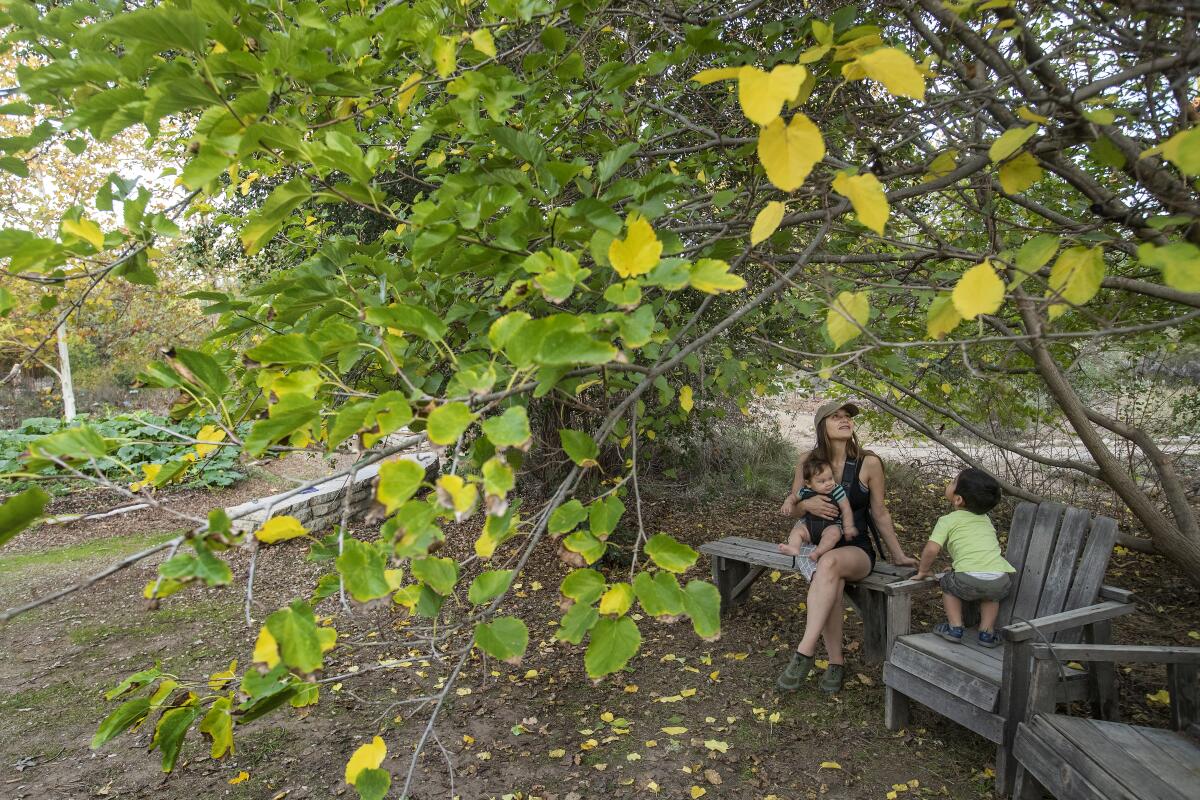
Arlington Garden
This is a garden where you can bring a book or a picnic, let children safely run free or find a sheltered corner for coffee and intense conversation. During a visit late on a fall Friday afternoon, one young woman sat in a corner of the allée with her sketch pad; a slender walker gaped at the white barrel-shaped blooms oozing with bees on a tall San Pedro cactus (Echinopsis pachanoi); and a toddler wheeled and shrieked with excitement at finding a pumpkin in the vegetable patch. Use this garden as you would a pair of comfortable shoes — as often as you can, with gratitude and love.
Admission is free and it’s open daily from sunrise to sunset. Dogs are permitted if leashed.

California Botanic Garden
This is a lovely garden to learn how native plants look when they’re mature. The garden’s website lists what’s currently in bloom, and, from October to May, you can purchase many of the plants you admire in the on-site Grow Native Nursery. Note: This is a great place to appreciate the heady fragrances of many California native plants. A slight stroke of a branch can fill the air with scent. Just be gentle when you walk by.
Admission: $10, $6 seniors and students, $4 ages 3-12, and free entry for members and children under 3. Annual memberships start at $50 for individuals and $85 for families.
Hours: Open 8 a.m. to 5 p.m. Tuesday to Sunday.
Food is not permitted in the gardens. No pets permitted except trained service dogs.
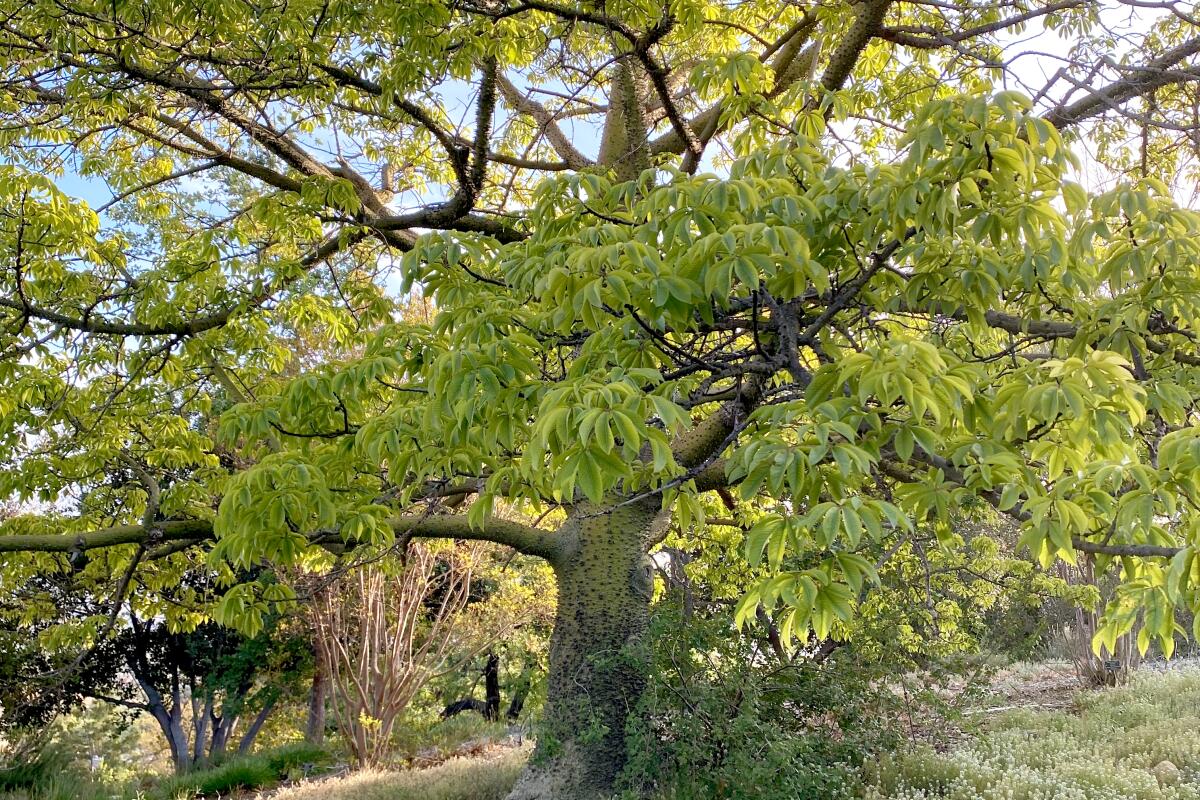
Conejo Valley Botanic Garden
This is a good place to bring children, with a stream running through, bridges here and there, and plenty of plant diversity, from a rare-fruit orchard and oak grove to gardens dedicated to butterflies, a bird habitat, desert cactuses and succulents, herbs, Australian plants, colorful native salvia and a “Trail of Trees” (more than 50 varieties of trees planted in 2005 to replace a slope covered with invasive mustard weed).
There’s also a special garden for children open from 11 a.m. to 3 p.m. on Sundays only. Another impressive fact: This nonprofit botanic garden was started by three local volunteers in 1973 — Ray Garcia, Fred Wilson and Jackson Granholm — after a housing developer donated the hilly, unbuildable 33 acres to the Conejo Recreation and Park District, said botanic garden president Beverly Brune. Today, the gardens comprise 41 acres and are completely managed by volunteers and funded by money raised by grants and fundraisers such as the garden nursery, which sells plants propagated from the garden from 9 to 11 a.m. Wednesdays and from 11 a.m. to 3 p.m. Sundays in the Kids’ Adventure Garden.
Hours: Open daily, sunrise to sunset, except during rain, high winds, on July 4 and when trails are muddy. The Kids’ Adventure Garden is only open 11 a.m. to 3 p.m. Sundays.
Food is not permitted in the gardens. Dogs are permitted if leashed.

Descanso Gardens
Descanso’s Sturt Haaga Gallery has rotating exhibits throughout the year, and the gardens often host original compositions and performances, sometimes with music piped through the trees. The garden, which is owned by L.A. County, also hosts popular seasonal events such as the Halloween-season Carved, featuring hundreds of pumpkins intricately carved by artists, and the annual holiday light show Enchanted. Visit often to check out the changing gardens because there’s always something blooming at Descanso. This is a garden you can visit according to your mood. Whether you’re feeling reflective or joyous, it will always be uplifting.
Admission: $15, $11 for seniors 65 and over and students with ID, $5 for children ages 5-12, members and children under 5 enter free. Annual memberships start at $70 for individuals and $99 for families.
Hours: 9 a.m. to 5 p.m. daily except Dec. 25. Members can enter at 8 a.m.
Food can be purchased on-site daily at the Kitchen at Descanso from 9 a.m. to 4:30 p.m. No pets permitted except trained service dogs.
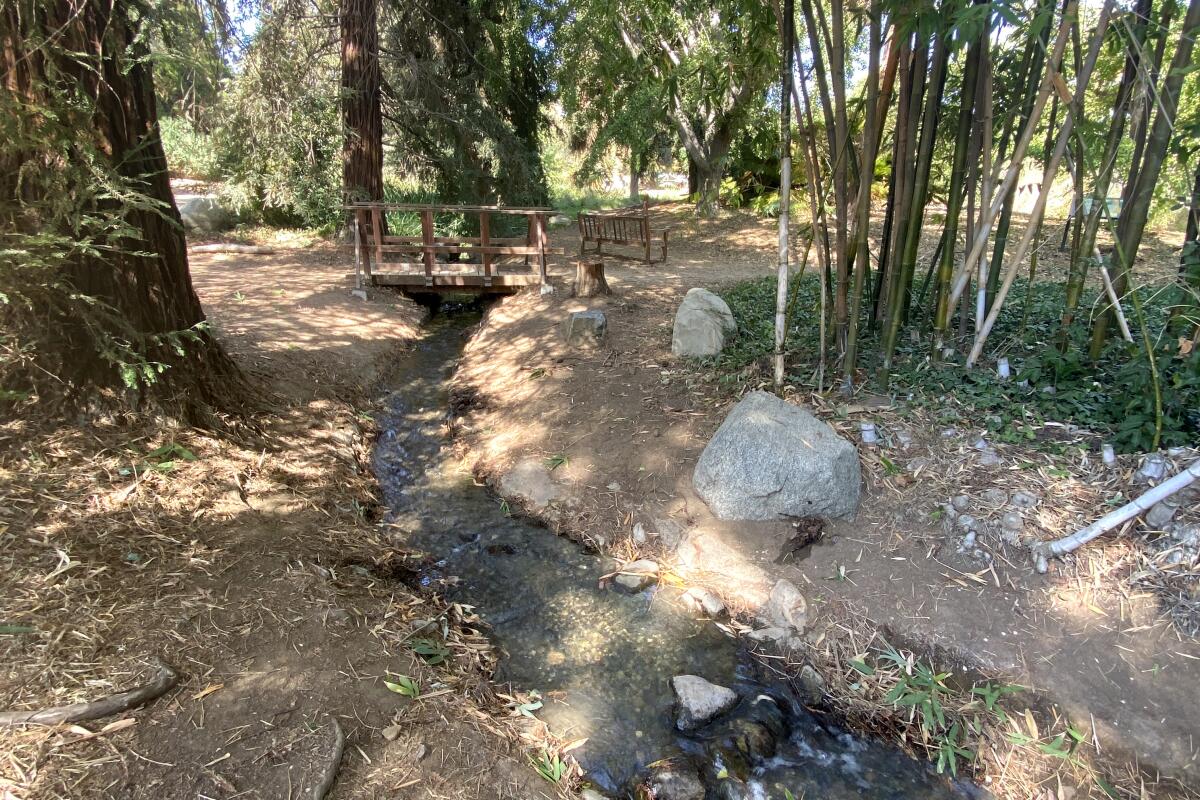
Fullerton Arboretum
Don’t miss the spectacular rock fig with its pale green trunks rising ghostlike from the heavily leaf-littered ground. At the east side of the garden is the thorn forest with truly bizarre plants such as the silk floss tree, with its thorn-studded branches and trunk and delicate lilylike blooms. Suddenly, after all the forests, you are smack in the desert, studded with barrel cactuses, towering agave blooms and also some shade from massive Chilean mesquite trees. The rare-fruit orchard and citrus groves remind us we live in Southern California, and if you’re lucky, you can purchase some of the bounty at the gate, such as bags of fresh fuyu persimmons, sapotes, star fruit and pomegranates.
Admission: $5 suggested donation. Members enter free (annual memberships start at $59 for individuals and $99 for couples).
Hours: 9 a.m. to 4 p.m. Wednesday-Monday; Tuesdays open only to members and Cal State Fullerton students.
Food: No food permitted inside the garden or available for purchase. However, a variety of fruit from the Arboretum’s orchards is periodically for sale at the main entrance. No pets permitted except trained service dogs.
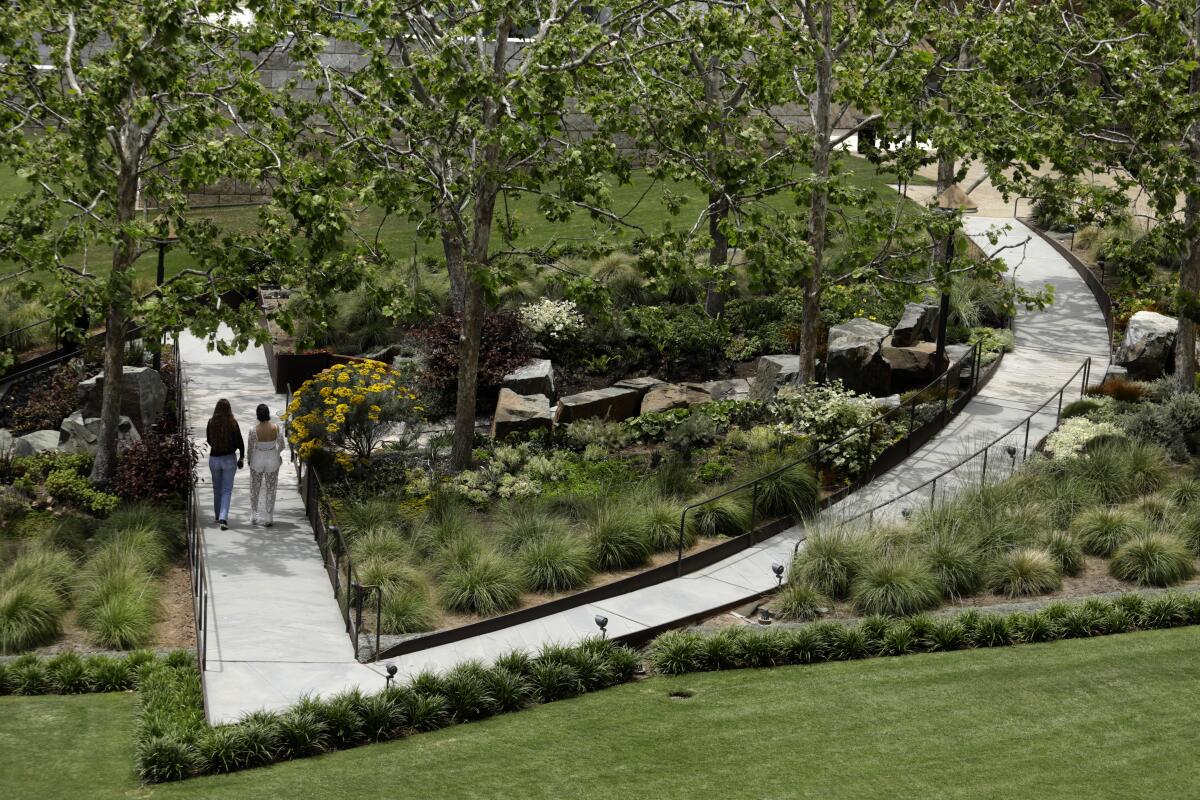
The Getty Center Gardens
The gardens also include a variety of cactuses and succulents and sculptures, all framed by the Getty’s austere, otherworldly architecture. Admission is free, although these days, because of COVID-19, you need to reserve an entry time to keep visitor numbers low.
Hours: 10 a.m. to 5 p.m. Tuesday-Sunday, closed Mondays and Jan. 1, July 4, Thanksgiving and Dec. 25.
Admission: Free, but parking is $20 per vehicle.
Food is available for purchase. No pets permitted except trained service dogs.
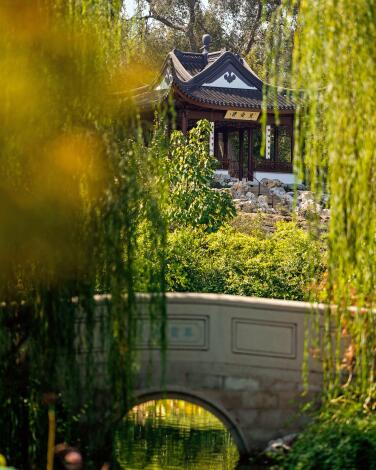
The Huntington Library, Art Museum & Botanical Gardens
If you go, plan a day devoted to just wandering the Huntington’s 130-acre gardens, a sprawling collection of extraordinary roses, authentic Chinese and Japanese gardens, and areas dedicated to Australian plants, Shakespearean plants, herbs, desert plants, jungle and subtropical plants (you can almost hear Tarzan bellowing somewhere in those towering, vine-dripping trees) and, of course, a whimsical garden to enchant children. The food options are varied and very good. The Jade Court Cafe in the Chinese Garden offers a range of cuisine, plus beer and wine. There’s also the 1919 Cafe near the entrance and the Red Car coffee shop for grab-and-go coffees, ice cream cones and sandwiches — and outdoor seating options. (The Rose Garden Tea Room is closed for renovations until winter 2022.)
If you want a free-day ticket (the first Thursday of every month), you’ll need to be strategic, ready to jump on a reservation at 9 a.m. the Thursday before. Due to the huge demand, people are assigned a random number after they enter the online waiting room for free tickets. If your number is selected, you can receive up to five tickets per household (babies also need tickets on free days).
Hours: Open from 9 a.m. to 5 p.m. daily except Tuesdays. Closed July 4, Thanksgiving, Dec. 24-25 and Jan. 1.
Admission: Prices start at $25 weekdays and $29 on weekends; slightly lower fees for seniors, students and children. Members and children under 4 enter free. Note that the Huntington’s free days — the first Thursday of every month — require advance reservations made the week prior, and spots fill up quickly. Members are not permitted on free days. Annual memberships start at $159; you can apply up to $50 of your admission fees toward a membership within 24 hours of your visit.
Food is available at several on-site cafes. No pets permitted except trained service dogs.

Los Angeles County Arboretum & Botanic Garden
Peacocks nonchalantly roam throughout the gardens — they’re descendants of the three birds imported by Rancho Santa Anita’s last owner, Elias Jackson “Lucky” Baldwin. There are historic buildings as well, such as the relocated Santa Anita Depot and the Queen Anne Cottage built by Baldwin. Little-known fact: This L.A. County-owned garden is also a great place for botanic research, thanks to its extensive library that you can search online and to Frank McDonough, a full-time botanical information consultant whose job is to answer the public’s questions about plants. (Call McDonough at (626) 821-3236.) The garden has regular wellness classes such as forest bathing and yoga. It also provides room for many plant-related conventions and clubs and offers a popular wintertime holiday light show called Lightscape. It’s truly a garden for the masses, especially if they have a taste for wonder.
Admission: $15, $11 seniors/students, $5 ages 5-12, members and children 4 and younger are free. Annual memberships are $70 for individuals, $65 for two seniors (age 62+) and $95 for families. Free day the third Tuesday of the month with advance reservations, which are available the first of each month.
Hours: Open 9 a.m. to 4:30 p.m. daily except Dec. 25.
Food: Peacock Café open daily except Monday.
No pets permitted except trained service dogs.
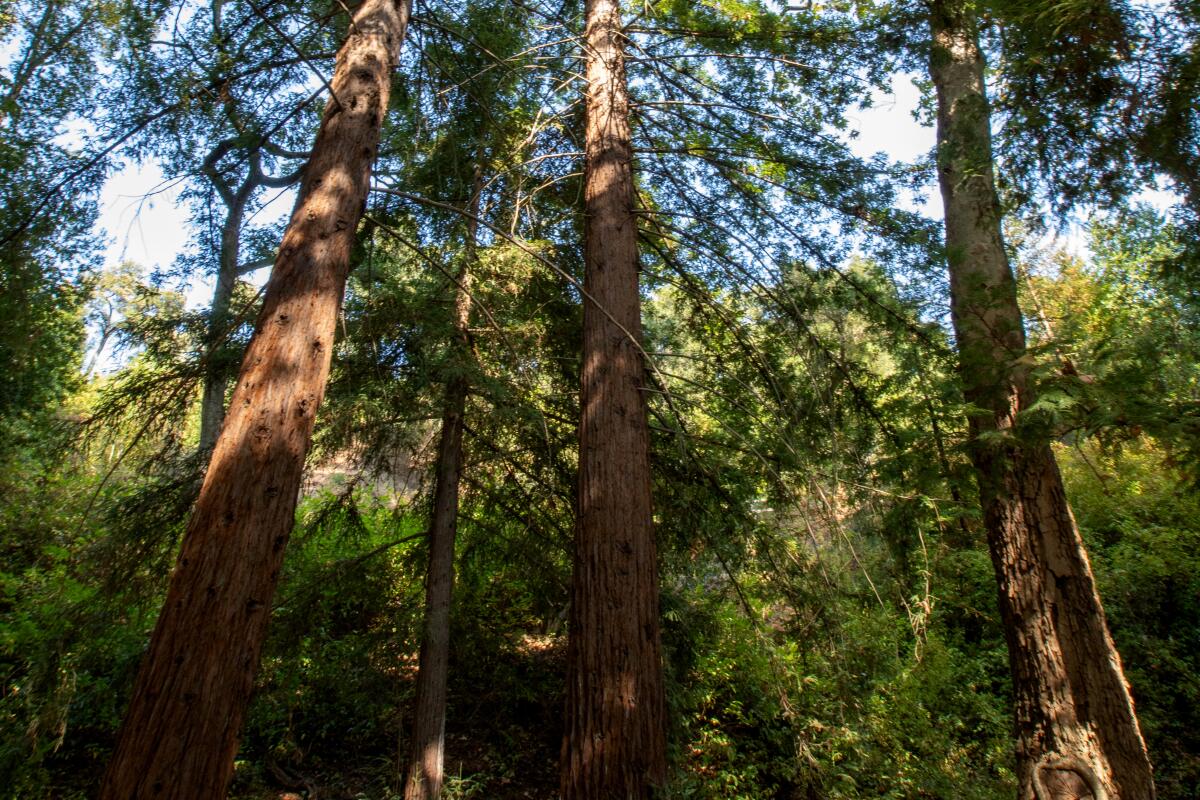
Santa Barbara Botanic Garden
Be sure to descend to the floor of the redwood grove, just to be inspired by its quiet grandeur. Then follow Mission Creek south to explore the aqueduct. Check out the maze in the children’s garden, and cross the creek to climb up to the manzanita garden, which features 60 varieties of the red-barked plants, ranging from sculptural ground covers to midsize shrubs and small trees — all of which have delicate bell-shaped blooms in the spring. This garden is a good way to see how California native plants can be incorporated into residential spaces. There’s also a water-wise home garden with useful suggestions about how to landscape using drought-tolerant native plants and a nursery where you can purchase at least some of the plants you admired. For die-hard horticultural researchers, the garden’s Blaksley Library, established in 1927, includes more than 15,000 books, journals and digital media about California’s plants and landscape history, as well as an extensive photo collection.
Admission: $16, $12 seniors 60+, $10 students with ID, $8 children ages 3-17, free entry to members and children 2 and younger. Annual memberships are $75 for individuals and $100 for families of two adults and children under 18.
Hours: 10 a.m. to 5 p.m. daily November through February, 10 a.m. to 6 p.m. March through October. Members hour from 9 to 10 a.m.
Food not available for purchase. Carry-in food is permitted. Dogs are permitted if leashed.
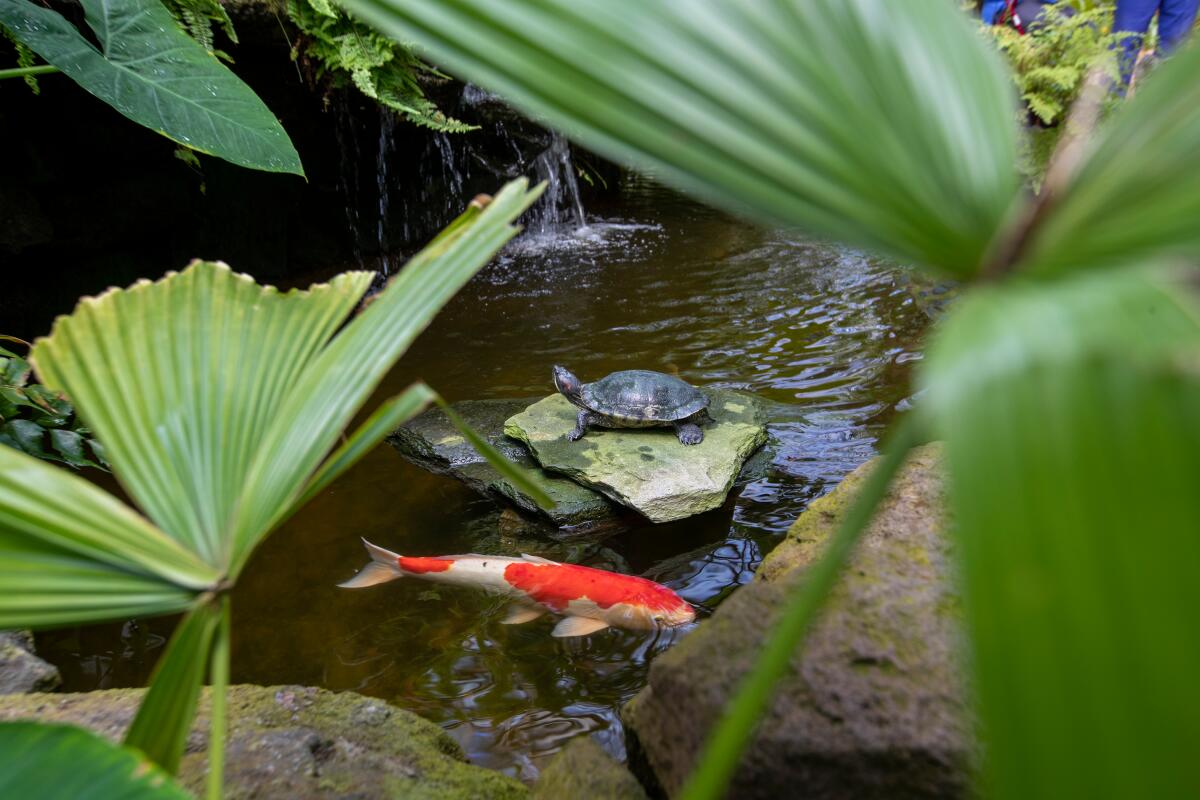
Sherman Library & Gardens
Sherman Gardens often weaves classes and art among its plants, hosting sculpture installations and performances by a contemporary dance troupe. The library specializes in the history of the Pacific Southwest, including Southern California, Arizona and northern Mexico, with 15,000 books and a collection of California Impressionist art. It’s easy to spend a few hours in this small garden. Maybe that’s because its intimacy and easy access invite you to linger and savor what you see.
Admission: $5; members and children 3 and under enter free. Annual memberships are $60 for individuals, $40 for seniors, $20 for students and $75 for families.
Hours: Open 10:30 a.m. to 4 p.m. daily except Thanksgiving, Dec. 25 and Jan. 1.
Food is available for purchase at the cafe from 11 a.m. to 2 p.m. Wednesdays through Sundays. No pets permitted except trained service dogs.
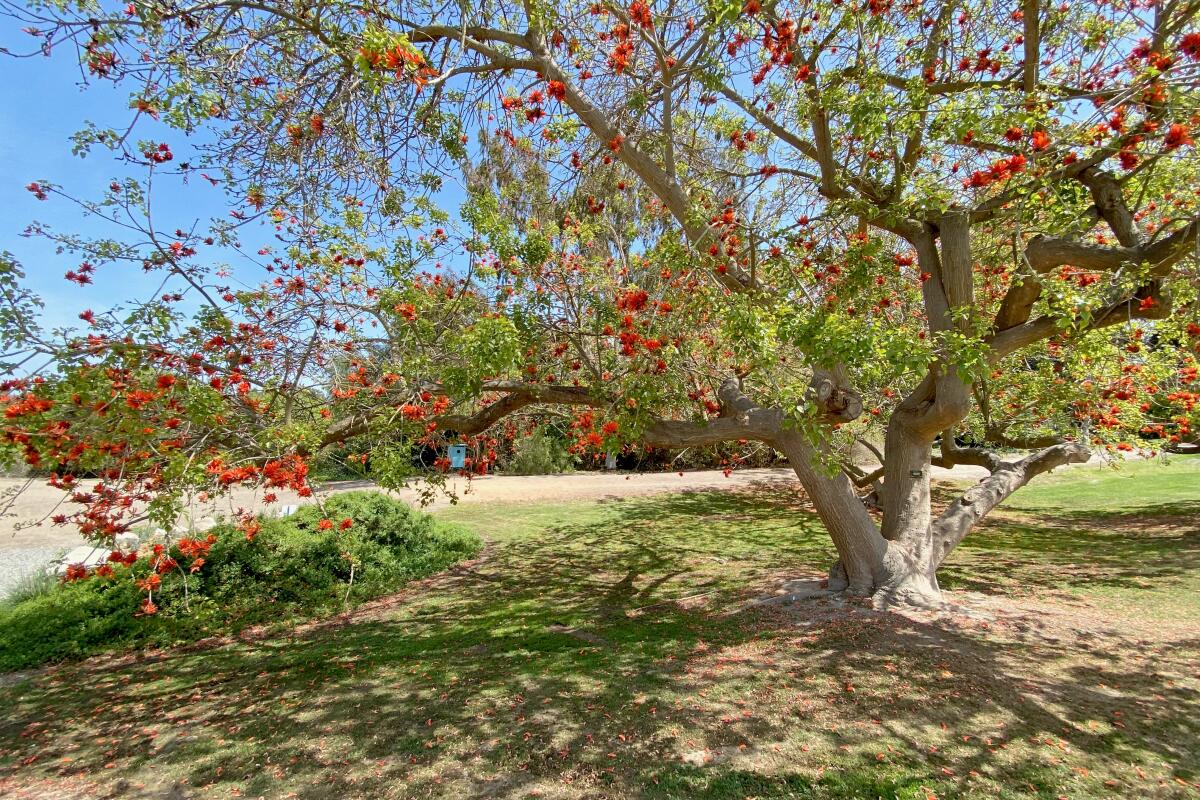
South Coast Botanic Garden
All in all, the garden has more than 2,500 different species of plants and 5 miles of trails, but if that feels overwhelming, the garden’s website offers a downloadable map for easy planning, along with suggestions for what to see based on how much time you have to visit. The garden also has two popular seasonal events that require an additional fee: SOAR, its butterfly pavilion and garden that is currently focused on monarch butterflies, and GLOW (Garden Lights & Ocean Waters), its second winter light show that features food, drink, music and thousands of lights designed to transform the garden into a water-themed locale through Jan. 17. If you only have 45 minutes, you can see a lot at this garden, but if you’ve got the time, it’s an easy, fragrant place to while away an entire afternoon. Just remember to bring something to eat.
Hours: Open 8 a.m. to 5 p.m. daily except Dec. 25.
Admission: Reserved tickets required; $15, $11 seniors 62+ and students, $5 children ages 5-12, free for members and children 4 and younger. (Members only need to reserve tickets on weekends.) Free admission with reservations on the third Tuesday of each month. Annual membership is $45 for individuals and $65 for two adults and up to four children under 18.
Food isn’t available for purchase. Carry-in food is permitted. No pets permitted except trained service dogs. Dogs are permitted if leashed only on designated dog walking days about 10 times a year (no more days scheduled until early 2022).
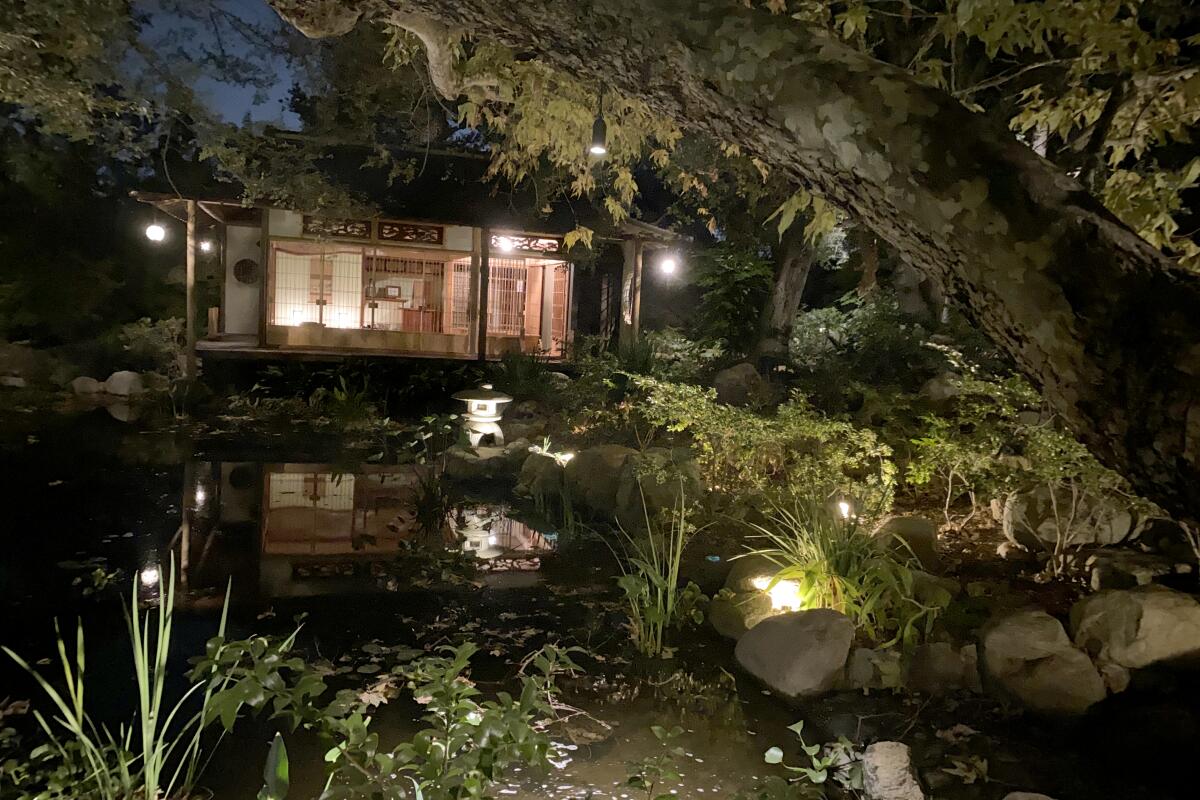
Storrier Stearns Japanese Gardens
If you’re looking for a special evening out, grab your favorite takeout and a bottle of wine and watch the day melt into night, with strings of lights reflecting off the koi pond. (Bring your own cups, bottle openers, cutlery and plates to the garden, and take it all with you when you leave.) The teahouse is lighted and open for visitors day or night. Just remember to remove your shoes.
Admission: Tickets are $12 if purchased online and $15 if purchased at the gate (and if space is available); children 12 and under enter for free.
Hours: Open 4 to 8 p.m. Fridays and Saturdays and 10 a.m. to 4 p.m. Sundays.
Food not available for purchase. Carry-in food is permitted. Dogs are not permitted in the garden.
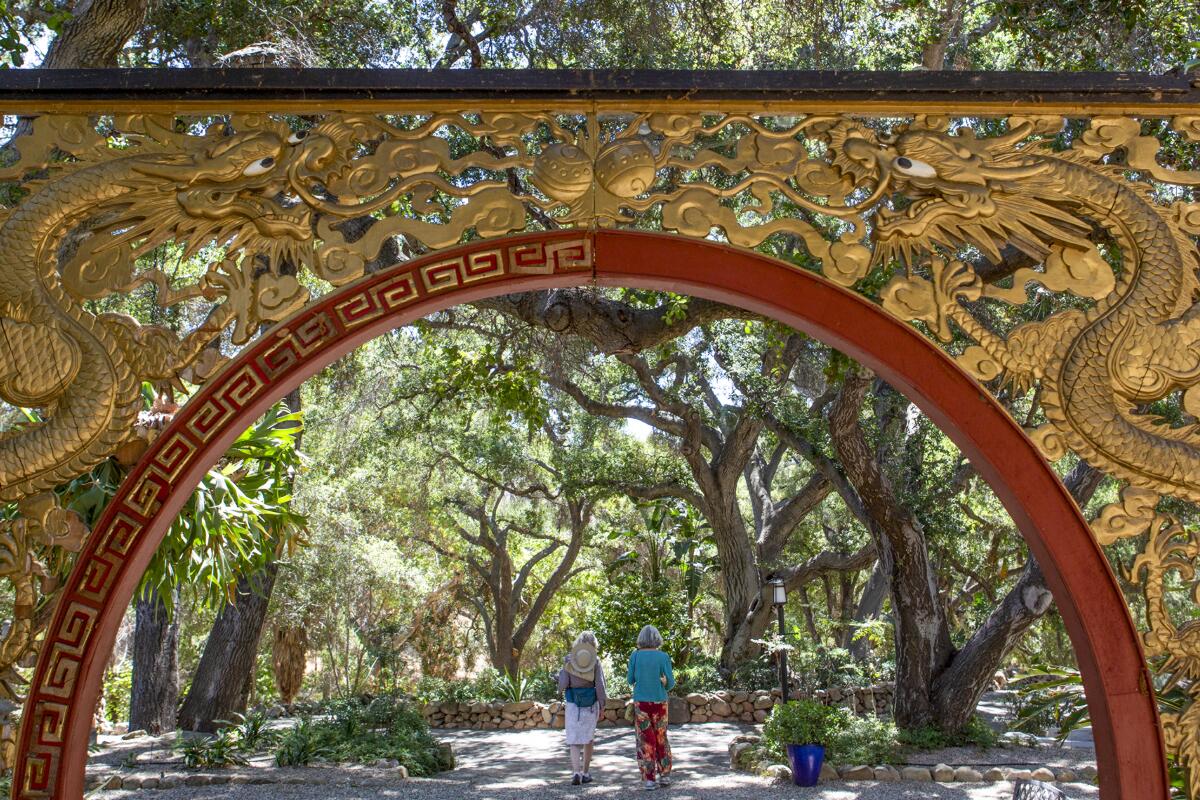
Taft Gardens & Nature Preserve
Wear good walking shoes. The paths can be uneven in spots, but there aren’t any serious climbs here — just a good wander through towering bottle trees and succulents and a riot of colorful blooms, especially in the spring. Water and restrooms are available toward the back of the gardens near the event center, but the managers suggest bringing your own pack-in-and-pack-out picnic along with extra water — especially in the heat. There are several worthy places to buy food in nearby Ojai. Order ahead and pick it up on your way to the gardens. So, yes, this trip will take some planning. But once you get there, you’ll feel like you have the place to yourself, and that kind of intimacy in a beautiful SoCal garden is a rare treat.
Admission: $20, tickets must be purchased online at least a day before your visit.
Hours: Vary by season; currently closed Sunday-Monday, Noon-5 p.m. Tuesday and Thursday, 9 a.m. to 3 p.m. Wednesday and Friday and 9-11 a.m. Saturday.
No food is sold on-site, but water is available. Carry-in food is permitted. Dogs are permitted if leashed.
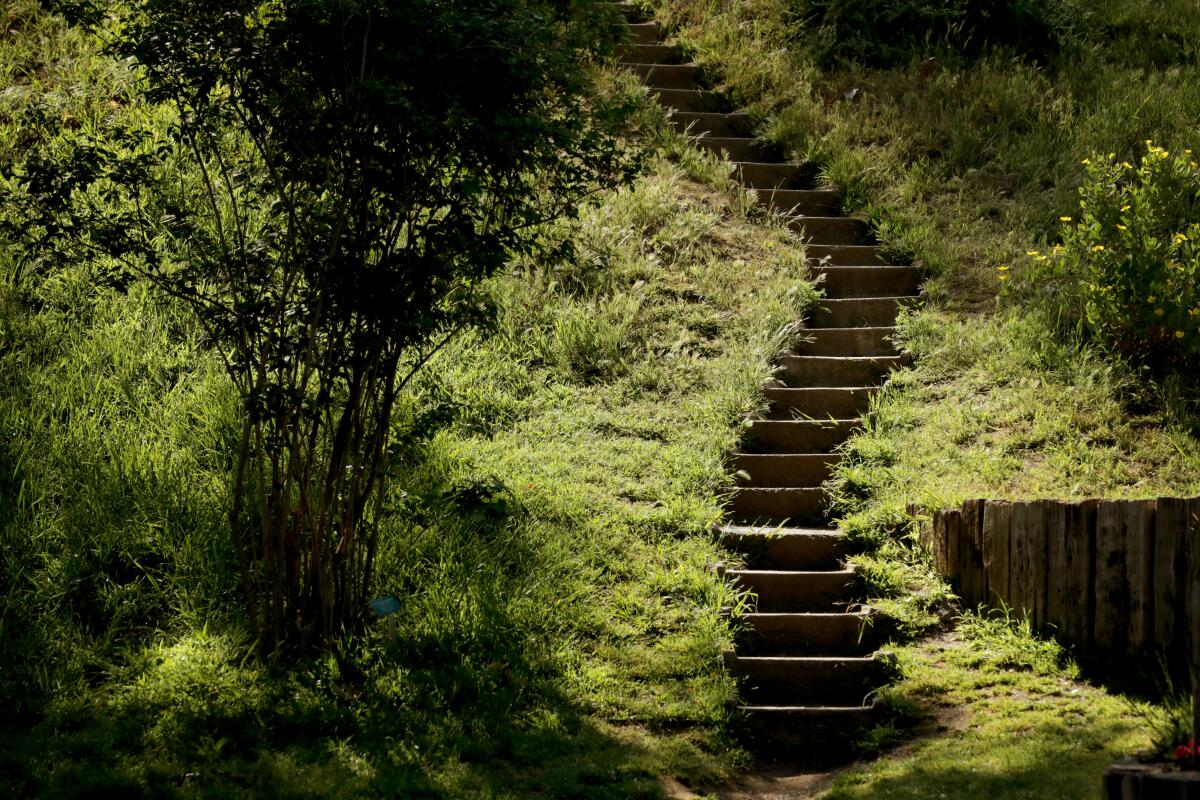
UC Riverside Botanic Gardens
The garden also has collections from a variety of geographical areas, including Australia and South Africa, as well as the eastern United States, with its temperate deciduous forests and North American deserts. And, of course, it also covers regions of California, from Baja and the California chaparral to North Coast redwood forests, oak woodlands, coastal sage scrub — native to the hills where the gardens are located — and a lovely shady area known as Alder Canyon full of native California riparian trees.
Admission: No charge but suggested $5 donation.
Hours: 9 a.m. to noon Monday-Wednesday, 9 a.m. to 2 p.m. Thursday-Friday, 8 a.m. to 2 p.m. first and third Sundays. Closed on major holidays or when the campus is closed for academic and administrative holidays. The campus calendar is here.
Food not available for purchase. Pets are not permitted in the garden.
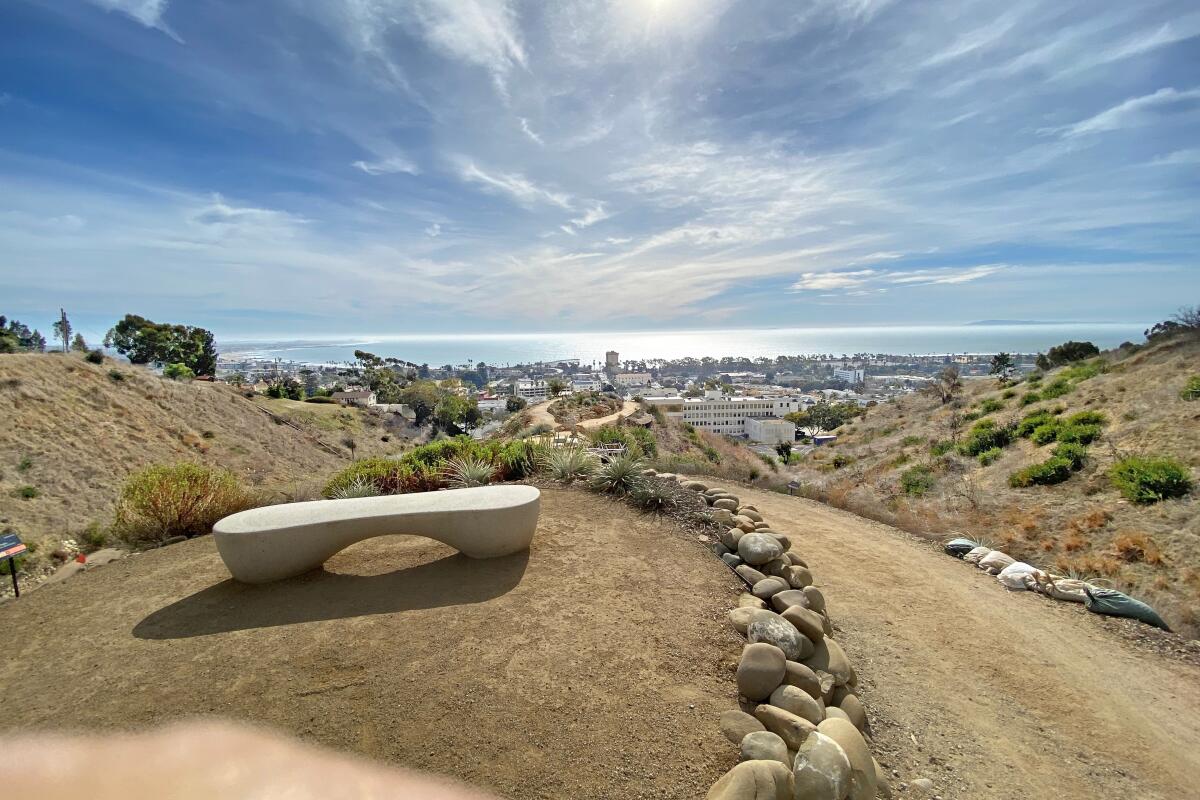
Ventura Botanical Garden
New plantings began in 2018, and today there is a young olive grove on one hill, rare Chilean wine palms that survived the fire despite the charring on their thick trunks and, in the South African Fynbos and Karoo gardens, proteas with blooms like fireworks, Dr. Seuss-like succulents and fragrant mounds of scented geraniums. The walks are uphill, but the incline is so gradual and the view so inspiring that you hardly notice the climb. The gardens also have a small gift store and nursery at the entrance. Note that the garden’s restrooms have been temporarily closed due to COVID-19. Public toilets are available downtown, a couple of blocks from the entrance.
Admission: $7, free to members and ages 18 and under. Admission free on Fridays and select holidays.
Hours: Open 9 a.m. to 5 p.m. Tuesday to Sunday.
Food is not sold on-site but can be consumed. Dogs are permitted, leashed, on Wednesdays and Fridays.
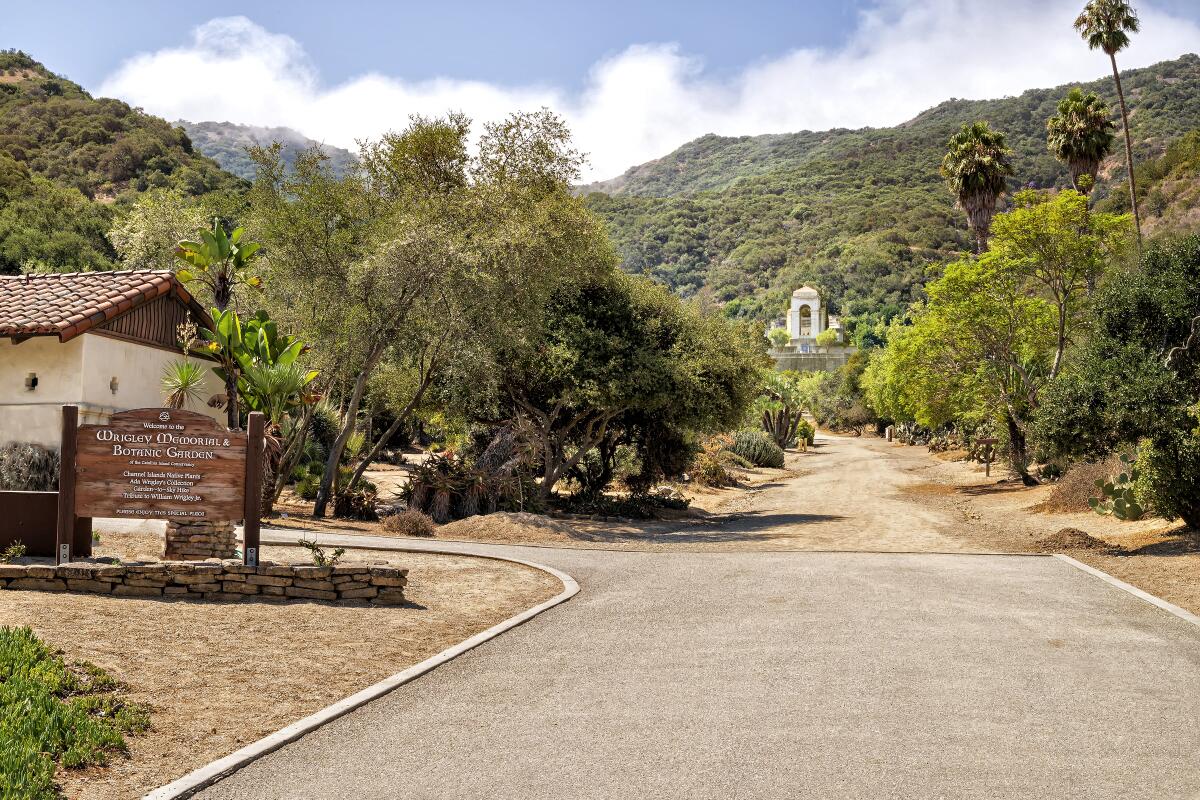
Wrigley Memorial & Botanic Gardens
Wrigley’s remains were later moved to Forest Lawn cemetery in Glendale, but the memorial tower and 38-acre botanic garden are still there, with succulents, desert plants of the Americas and a large swath devoted to native plants endemic to the island — meaning they are only found natively on Catalina — along with plants endemic to the other Channel Islands. The garden is also the primary gateway to one of the Catalina Island Conservancy’s most popular hikes, the Garden to Sky trail.
Admission: $8, $6 seniors and veterans with ID, $4 children ages 5-12, members, children under 5 and active military (and their families) with ID enter free.
Hours: Open 8 a.m. to 5 p.m. daily except Thanksgiving and Dec. 25.
Carry-in food permitted on-site; water only available at the entrance. No pets permitted except trained service dogs.
Sign up for our L.A. Times Plants newsletter
At the start of each month, get a roundup of upcoming plant-related activities and events in Southern California, along with links to tips and articles you may have missed.
You may occasionally receive promotional content from the Los Angeles Times.




